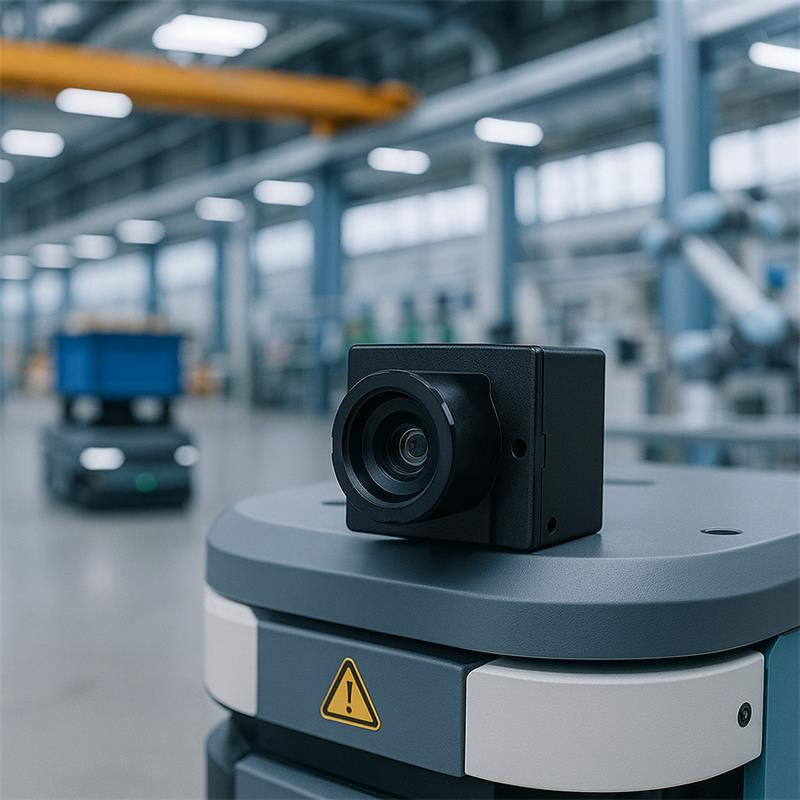Vision + Robotics Safety: Regulations and Market Opportunities in the US and Europe
Introduction
As collaborative robots (cobots) and autonomous mobile robots (AMRs) become standard across manufacturing floors, logistics hubs, and even commercial environments, safety is no longer optional—it is fundamental. In the US and Europe, robotics safety is increasingly tied to vision systems, which provide real-time monitoring, object detection, and human-robot interaction safeguards. For manufacturers and integrators, understanding both the regulatory landscape and the market opportunities around “Vision + Robotics Safety” is critical to staying competitive.
1. Why Vision Matters in Robotics Safety
Traditional industrial robots were fenced off, physically separated from human workers to prevent accidents. But the new era of collaborative robotics removes those barriers. Safety must now be achieved through intelligent perception.
Vision systems provide:
- Dynamic obstacle detection (ensuring robots stop or reroute when a person approaches).
- Precision in motion (reducing risks of unintended collisions).
- Enhanced human-robot collaboration (robots can recognize gestures or facial cues).
- Compliance data (visual logs help prove safety compliance during audits).
For industries like automotive manufacturing in Germany, warehousing in the US, and smart factories in Scandinavia, the use of compact cameras—such as **USB night vision modules or AHD cameras—**has become a foundation of safety compliance.

2. Regulatory Landscape in the US and Europe
United States
In the US, robotics safety is guided by standards from organizations such as:
- OSHA (Occupational Safety and Health Administration): Enforces workplace safety, increasingly applying to robotic operations.
- ANSI/RIA R15.06: A robotics safety standard aligned with ISO 10218, focusing on risk assessment and safeguarding methods.
- NIST Guidelines: Pushing forward best practices for AI-driven safety, including the integration of perception technologies like vision sensors.
For robotics developers, integrating vision modules directly supports compliance with OSHA and ANSI/RIA requirements, particularly in environments where robots and humans share the same workspace.
Europe
Europe has been more aggressive in harmonizing robotics safety standards:
- ISO 10218 & ISO/TS 15066: Define safety requirements for industrial and collaborative robots, particularly limits on force, speed, and collision energy.
- CE Marking: Any robotic system sold in Europe must demonstrate compliance with safety and electromagnetic compatibility (EMC).
- Machinery Directive 2006/42/EC (under revision): Includes explicit requirements for advanced sensors in collaborative robotics.
In countries like Germany and Italy, where robotics adoption in automotive and industrial automation is strongest, vision-enabled safety is not just a differentiator—it is a regulatory obligation.
3. Market Opportunities for Vision + Safety Integration
The emphasis on safety opens a wide range of market opportunities for companies offering embedded vision solutions. Some of the most promising applications include:
- Automotive Manufacturing (Germany)
Automotive plants are rapidly deploying cobots for tasks like precision assembly, welding, and inspection. Vision-equipped robots ensure compliance with strict German safety regulations while improving uptime and reducing injury risks.
- Logistics & Warehousing (United States)
In Texas and California, e-commerce giants are integrating AMRs with night vision cameras for safe navigation in low-light, 24/7 warehouse environments. Vision-based safety helps avoid costly OSHA violations and ensures workforce trust.
- Energy Infrastructure (Spain)
Renewable energy companies use robotic inspection systems with starlight and infrared cameras to monitor solar farms and wind turbines at night. Safety vision systems allow operators to minimize human exposure to hazardous environments.
- Food & Beverage Automation (Italy)
In Italy, cobots are increasingly used in food packaging and inspection. Vision ensures that robots detect unexpected human presence near conveyor belts, keeping compliance with EU food and safety regulations.
- Healthcare Robotics (United Kingdom)
With stricter patient safety rules, service robots equipped with miniature USB cameras can navigate hospital corridors safely, avoiding patients and staff in sensitive environments.

4. Pain Points and Challenges for Customers
Industrial and commercial clients face several challenges when integrating robotics safety systems:
- Complex integration: Vision solutions must be plug-and-play to avoid long downtime during deployment.
- Cost control: Companies want affordable, high-quality modules that balance performance with budget.
- Low-light performance: Night shifts and dimly lit warehouses require high-sensitivity starlight cameras.
- Future-proofing: Clients demand solutions that align with AI-enhanced analytics and edge processing trends.
5. How Vision-Based Safety Creates Value
By addressing the above pain points, high-quality micro and starlight USB camera modules become more than sensors—they become compliance enablers and ROI drivers:
- Reduced downtime (fast integration via USB/HDMI).
- Lower compliance risk (meeting ISO/OSHA requirements).
- Enhanced trust (workers are more comfortable collaborating with robots that “see”).
- Long-term scalability (AI-ready hardware for predictive safety analytics).
Conclusion: Vision + Safety as the Future Standard
In both the United States and Europe, the message is clear: robotics safety equals vision-enabled safety. Regulations such as ISO/TS 15066, CE Marking, and OSHA standards are shaping a future where embedded cameras are mandatory for collaborative robots and industrial automation.
For robotics integrators, manufacturers, and product managers, adopting night vision USB cameras, starlight-enabled modules, and compact plug-and-play sensors is not only about safety compliance—it’s about seizing a growing market opportunity.
Companies that position themselves at the intersection of vision technology and robotics safety will be best equipped to thrive in the industrial landscape of 2025 and beyond.


